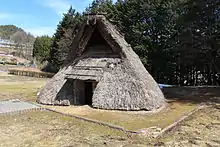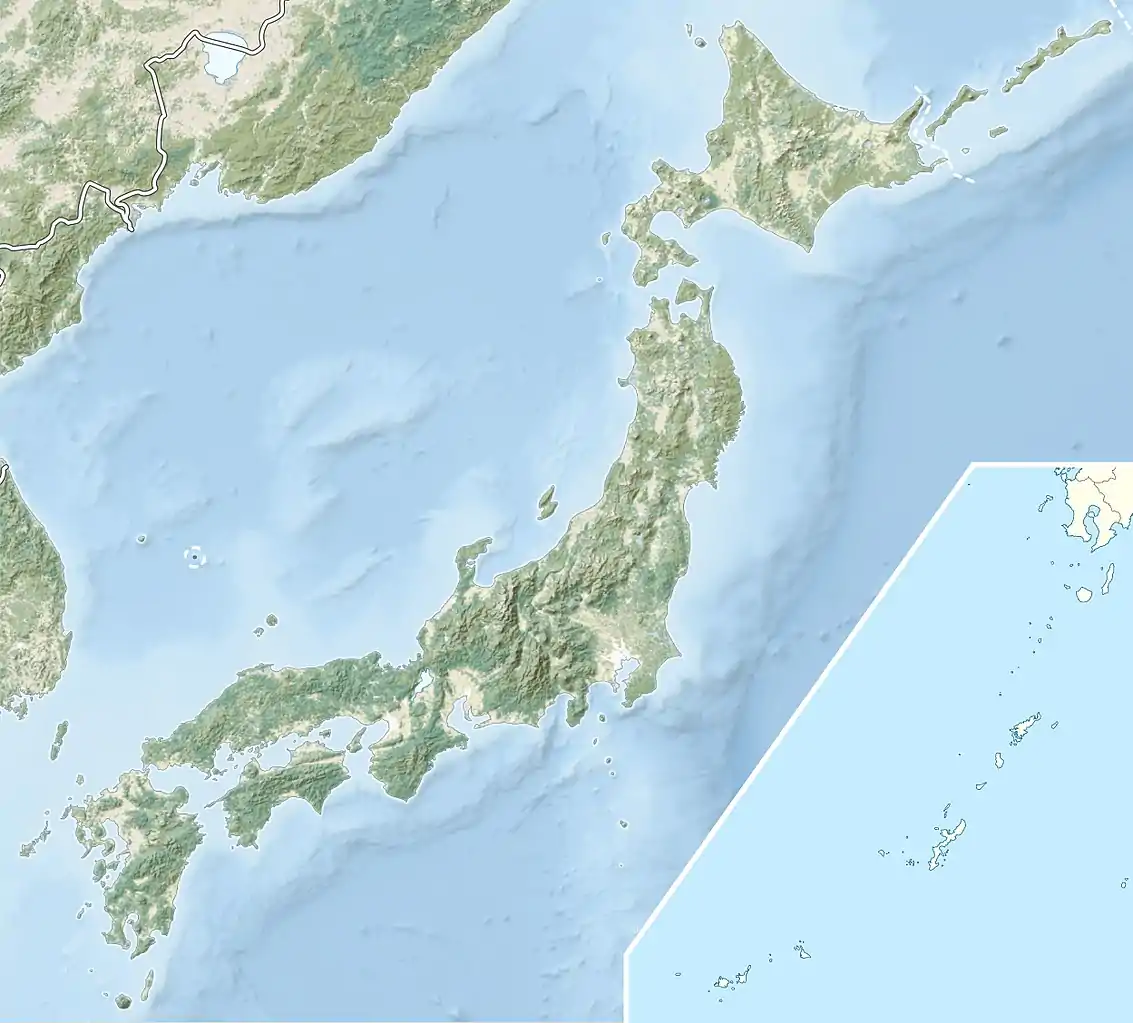Dōnosora Site
Dōnosora Site (堂之上遺跡, Dōnosora iseki) is an archaeological site and the ruins of an early to middle Jōmon period settlement in what is now the city of Takayama, Gifu in the Chūbu region of Japan. The site was designated a National Historic Site of Japan in 1980.[1]
堂之上遺跡 | |
 Pit house at Dōnosora Site | |
 Dōnosora Site  Dōnosora Site (Japan) | |
| Location | Takayama, Gifu, Japan |
|---|---|
| Region | Chūbu region |
| Coordinates | 36°03′13″N 137°16′47″E |
| Altitude | 680 m (2,231 ft) |
| Type | settlement |
| History | |
| Founded | 4000 - 1500 BCE |
| Periods | Jōmon period |
| Site notes | |
| Ownership | National Historic Site |
| Public access | Yes |
Overview
The site is located on a small river terrace where the Hida River meets the Hasshaku River, near the southern slope of watershed of Japan in the Northern Alps at an altitude of 680 meters. A full-scale excavation conducted from 1973 to 1979 discovered the foundations of 43 pit dwellings from the early and middle Jōmon period, arranged as an annular village surrounding a central plaza. Middens containing the remnants of nuts, such as walnuts. The pit dwellings from the latter half of the mid-Jōmon period could be divided into two types. One type contained stone ovens made from river stones and buried pots, and the other contained a double stone oven with large flat stones laid around to form a cobblestone floor. Pottery shards found were from the Kantō region of Japan and from the Tōkai and Kansai regions of Japan, inducing that this site was on a trade route between east and west, and also between the Pacific and Sea of Japan coasts.
The site is now public archaeological park, with a number of reconstructed pit dwellings.
References
- "堂之上遺跡" [Dōnosora Site] (in Japanese). Agency for Cultural Affairs.
External links
![]() Media related to Dōnosora site at Wikimedia Commons
Media related to Dōnosora site at Wikimedia Commons
- Takayama city home page (in Japanese)
- Gifu Prefectural home page (in Japanese)